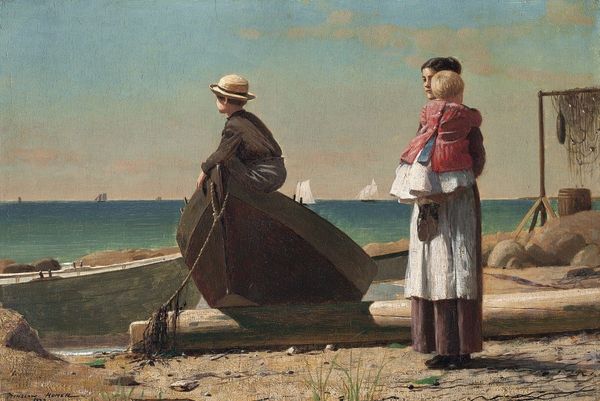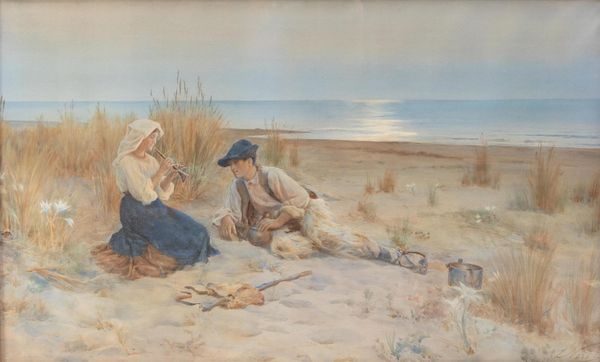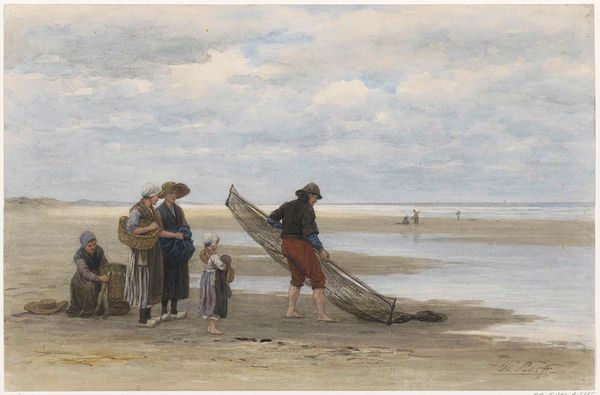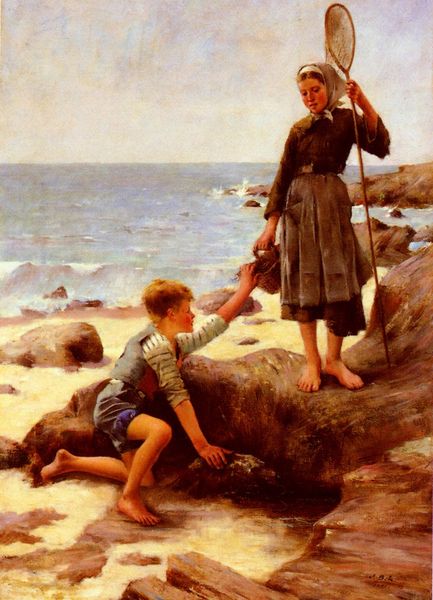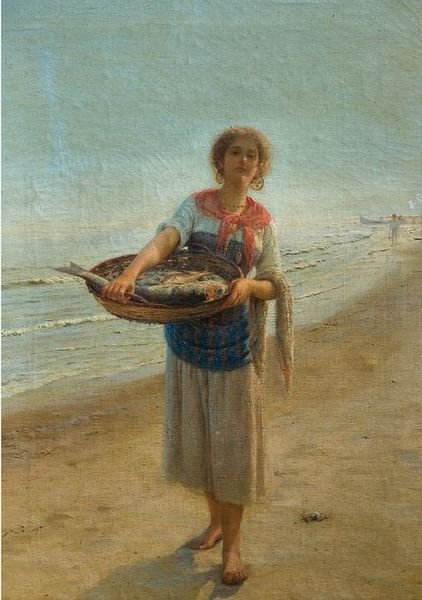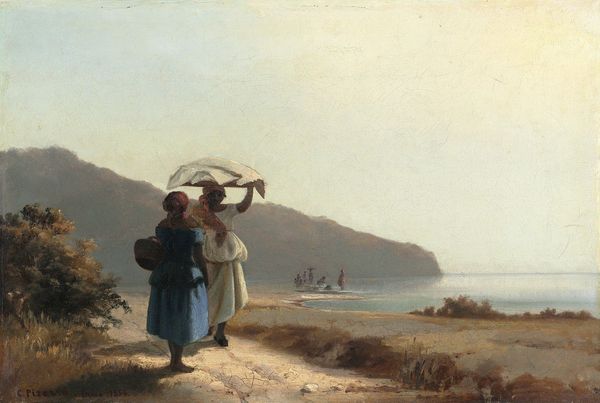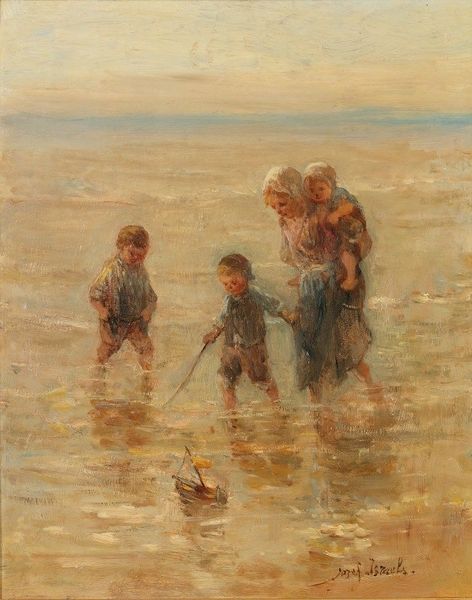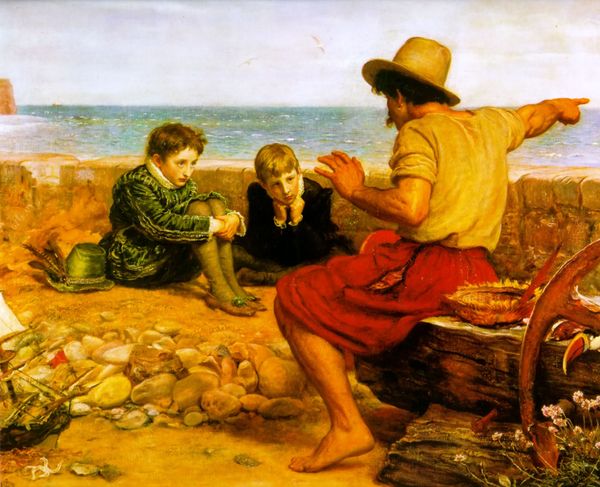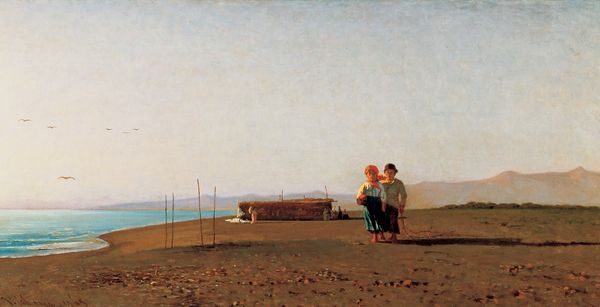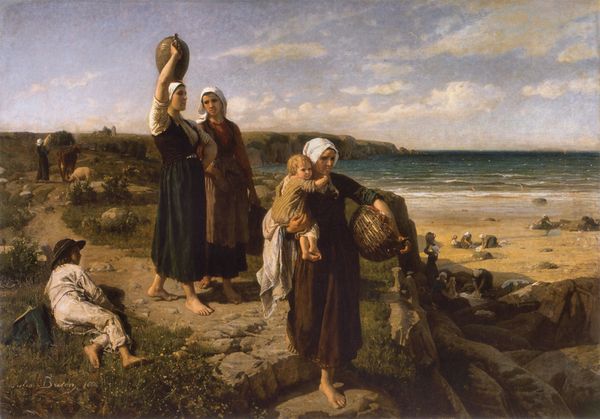
Copyright: Public Domain: Artvee
Jozef Israëls painted "Children of the Sea" in 1872, capturing a poignant moment on the Dutch coast. It depicts two children, one playing with a toy boat, the other watching, perhaps contemplating the vastness of the sea. Israëls belonged to the Hague School, a group of Dutch artists who reacted against the academic style of the time. They turned instead to everyday life, portraying the hardships and realities of rural communities, particularly those connected to the sea. The subdued palette and focus on ordinary people reflect a broader European trend of social realism in the mid-19th century. We can see the influence of institutions such as the French Barbizon school who embraced painting ‘en plein air’, and whose focus on peasants influenced the work of Israels and his contemporaries. The establishment of art academies and the growing market for genre paintings also shaped the demand for these types of scenes. To fully appreciate Israëls' work, it's important to understand the socio-economic conditions of the Netherlands in the late 19th century. Museum archives, historical records, and studies of Dutch art and culture can offer valuable insights into the context in which this painting was created.
Comments
No comments
Be the first to comment and join the conversation on the ultimate creative platform.
